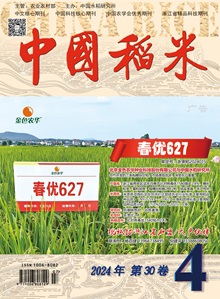This study aimed to solve the bottleneck issue of high yield but poor quality in hybrid rice. The complex hybridization was conducted by utilizing the high-combining ability and high-outcrossing rate maintainer line Bo B, the high-quality Simiao rice variety Mi 31 from South China, and the high-quality, disease-resistant early rice variety Zhe 9248 from the lower reaches of the Yangtze River. The methods of shuttle planting to increase the ecological pressure for phenotypic identification and indoor analysis for quality assessment were employed. A high-quality cytoplasmic male sterile line and its corresponding maintainer line, Taifeng A/B, with slender grain shape, high head rice recovery, low chalkiness, and good taste, have been bred. By the end of 2023, 92 hybrid rice varieties, including Taifengyou 208, Taiyou 1002, Taiyou 390, and Taiyou 398, have been bred using Taifeng A, of which 80.4% meet the national (ministerial) high-quality standard of Grade 3 or above. Among them, 18 varieties/times have won gold and silver awards in national or provincial high-quality rice taste evaluations, and 2 varieties have been recognized as super rice. This has effectively solved the problem of “high yield but poor quality” in hybrid rice. In addition, we have analyzed the genetic characteristics controlling the important quality traits of Taifeng A/B and found that the GS3, GW5TFB, WxTFB, and GW7TFB genes located on chromosomes 3, 5, 6, and 7, respectively, or the chromosomal segments where they are located, are the critical genetic basis for the excellent quality of Taifeng A/B.

